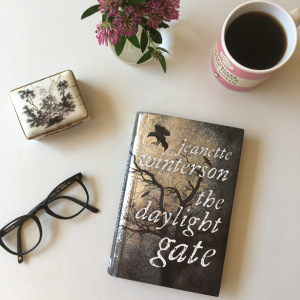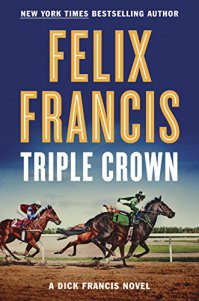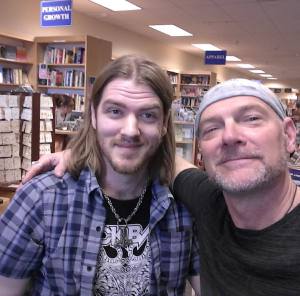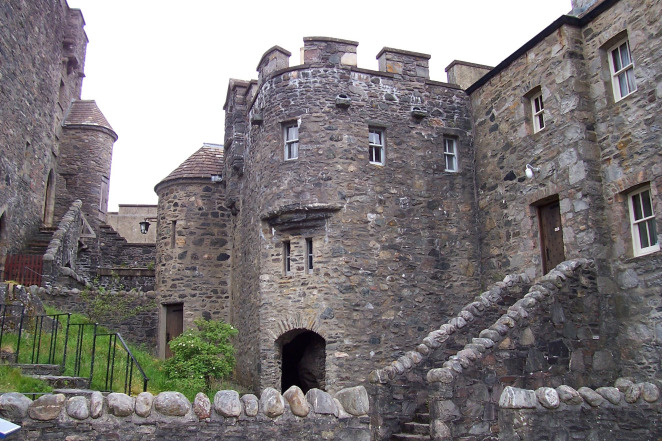Welcome, welcome to the inside of my head. Where thoughts whirl around like leaves in the autumn breeze and the most unlikely connections are made. As I read The daylight gate by Jeannette Winterson I had several ideas of potential blogpost. We’ll see if any of them will be written, I’m just giving you a tiny glimpse of my creative process here (I’m in a period of reading books about creativity and that is also an influence).

1. I went from the ashes into the fire; the similarities between this and Mary by Aris Fioretos
I started this to give me a break from the beautiful, but utterly heart breaking, book Mary which is about a student involved in the uprisings in Greece in the 70’s. She is accused of being a communist and then sent, without a trial, to an island where she is tortured as to confess her actual name and her co-conspiritors. To lessen the burden on my heart I decide to read a book about witch trials? Not my smartest decision especially since both of them devote plenty of pages to detailed descriptions of the toture. Even though both these books are fiction they have roots in reality. Gutted.
2. The idea to read Shakespeare’s The tempest
In this Shakespeare makes an appearance, when two of the characters travel to see the play The Tempest. The bard himself is visiting to with his new work and changes words with our leading witch. I’m back in the drama reading mood so it wouldn’t be a bad idea.
3. That I should read A winter’s tale and Winterson’s rewriting of it.
Oh, this might be an even better idea as A winter’s tale is mentioned too in this book and Winterson did a reprint of this for the Hogarth series to commemorate the 400 year anniversary since his death. But not really the time for it? Or is it? Reading about winter in summer?
4. It’s time to bring back the cocktail I made named after John Dee.
Queen Elizabeth’s astrologer (and at one point the owner of the biggest library in England) John Dee is cast a role in this piece of fiction as mentor of Alice Nutter. The Virgin queen referred to Dee as “My Nobel Intelligencer” and reading about him in another book inspired me to make a cocktail with that very name. In fact I reread that post and, spelling error aside, it’s isn’t all bad. Might translate.
5. I should write a list of books about Witches.
I have read a few in my time. But honestly it will have to wait until I’m done with Witches by Stacey Schiff which I’m also reading.
6. “It is the elixir that I have instructed you to wipe over your entire body once a month at the new moon”. So something about skin care?
So this elixir is supposedly a mix of mercury and magick(ye old spelling) that keeps Alice Nutter looking far younger then her years. One should put no such things on the skin in real life. A nice retinol however? I do not know much about skin care but I have a fair few empty bottles at the moment and maybe it’s time to report on that. The short version would be that the argan oil from The ordinary may be cheap but the scent is off putting.
7. “She was dressed in magenta”. I should be too.
Supposedly Nutter’s wealth comes from her invention of a magenta dye that so impressed Queen Elizabeth I that she got a royal warrant. Nutter wears the colour often in the book, Winterson points it out. And magenta feels like a nice colour right now, isn’t everyone kind of over hot pink? It should be noted that when I did research the inter webs claimed that fuchsia and magenta are the same colour but the difference in name is due to process. Magenta is a synthetic dye imitating fuchsia as I understand it. And as the plants they imitate have several colors there seems to be a certain disagreement of definition.
In the end I think this book is a horror story, which doesn’t appeal to me as much. Although the writing is nice, Winterson put it to better use in the other books I’ve read by her.
Things mentioned in this post;
My cocktails inspired by John Dee (in Swedish)
Magenta
-Suss
Advertisements Like this:Like Loading... Related




